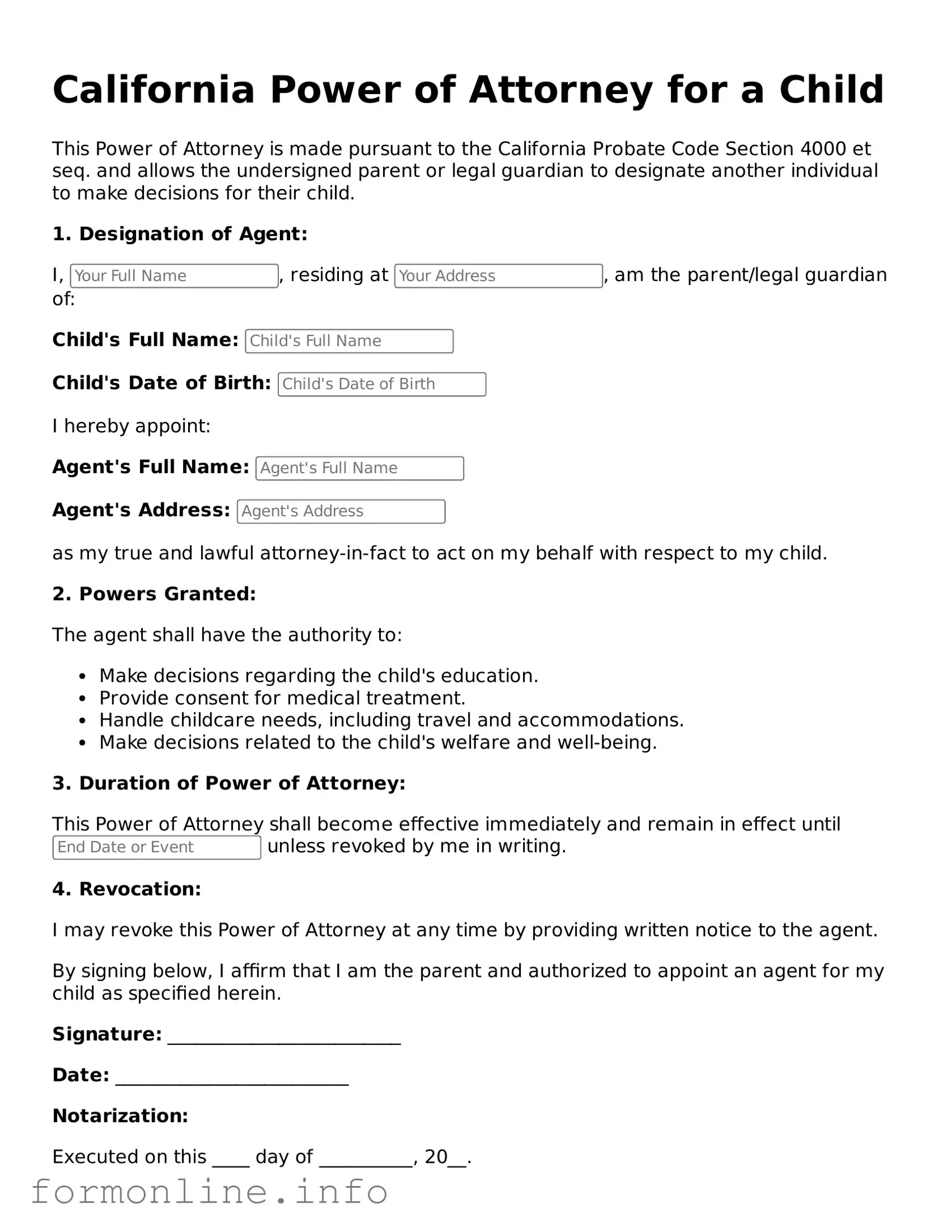The California Medical Power of Attorney form allows individuals to designate someone to make medical decisions on their behalf. Similar to the Power of Attorney for a Child, this document empowers another person to act in a specific capacity. Both forms require clear identification of the individual granting authority and the person receiving it, ensuring that the designated agent can make decisions aligned with the grantor's wishes.
The Durable Power of Attorney is another document that shares similarities with the Power of Attorney for a Child. It allows individuals to appoint someone to manage their financial affairs if they become incapacitated. Like the child-specific form, it grants authority to act on behalf of another person, but it focuses on financial matters rather than caregiving or parental rights.
The Limited Power of Attorney is also comparable. This document provides authority for specific tasks or a limited period. Similar to the Power of Attorney for a Child, it requires clear instructions about the scope of authority granted. Both documents are effective in situations where full power is not necessary, allowing for targeted decision-making.
The Guardianship Agreement serves a similar purpose in protecting the interests of a child. This legal arrangement appoints a guardian to care for a minor when the parents are unable to do so. While the Power of Attorney for a Child allows temporary decision-making authority, a Guardianship Agreement is a more permanent solution, often requiring court approval.
The Child Custody Agreement outlines the rights and responsibilities of parents or guardians regarding a child's care. This document is similar in that it focuses on the well-being of a child. Both agreements prioritize the child's best interests, but the custody agreement is more comprehensive in defining living arrangements and visitation rights.
The Consent to Medical Treatment form allows parents or guardians to authorize medical care for a child. This document is similar to the Power of Attorney for a Child in that it grants specific authority for decision-making related to a child's health. Both forms aim to ensure that a child receives necessary medical attention when required.
The Child Travel Consent form is another document that shares similarities. It permits a child to travel with a designated adult, often required by airlines or other travel entities. Like the Power of Attorney for a Child, it establishes clear consent from the parent or guardian, ensuring that the adult accompanying the child has the necessary authority during travel.
The Educational Power of Attorney allows parents to designate someone to make educational decisions for their child. This document is similar in that it grants authority for a specific area of a child's life. Both forms are designed to ensure that someone can act on behalf of the child when the parents are unavailable or unable to make those decisions themselves.
The Washington Mobile Home Bill of Sale is also an important legal instrument to consider, especially when undertaking a property transaction. This form, which serves as proof of ownership transfer, specifies the necessary details to avoid complications in the selling process. For more information on properly handling such transactions, you can refer to the Mobile Home Bill of Sale.
The Special Needs Trust is a legal arrangement that provides for the financial support of a child with disabilities. While it is different in purpose, it is similar in that it aims to protect a child's interests. Both documents require careful consideration of the child's needs and the authority granted to another party to act in the child's best interest.
